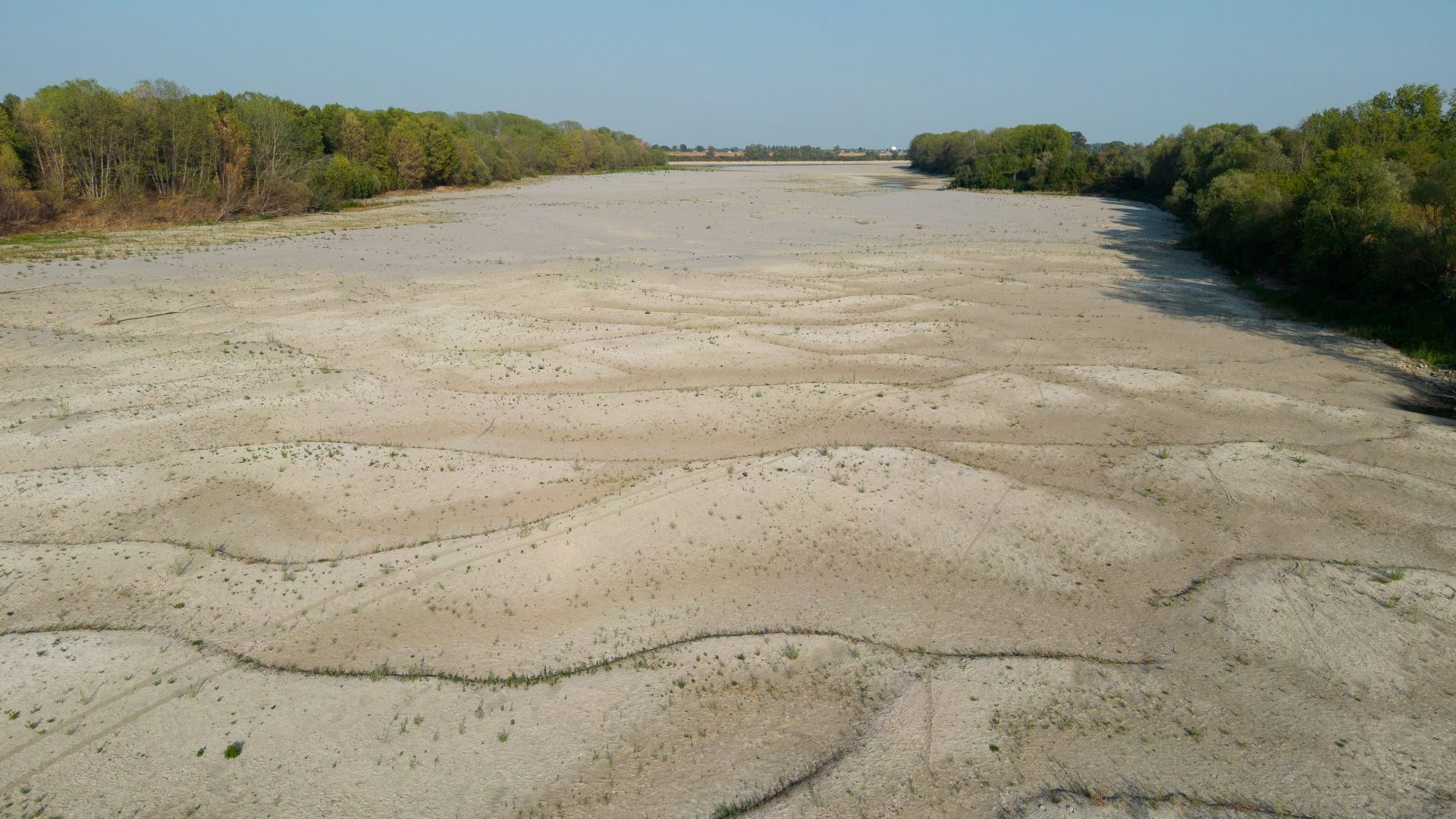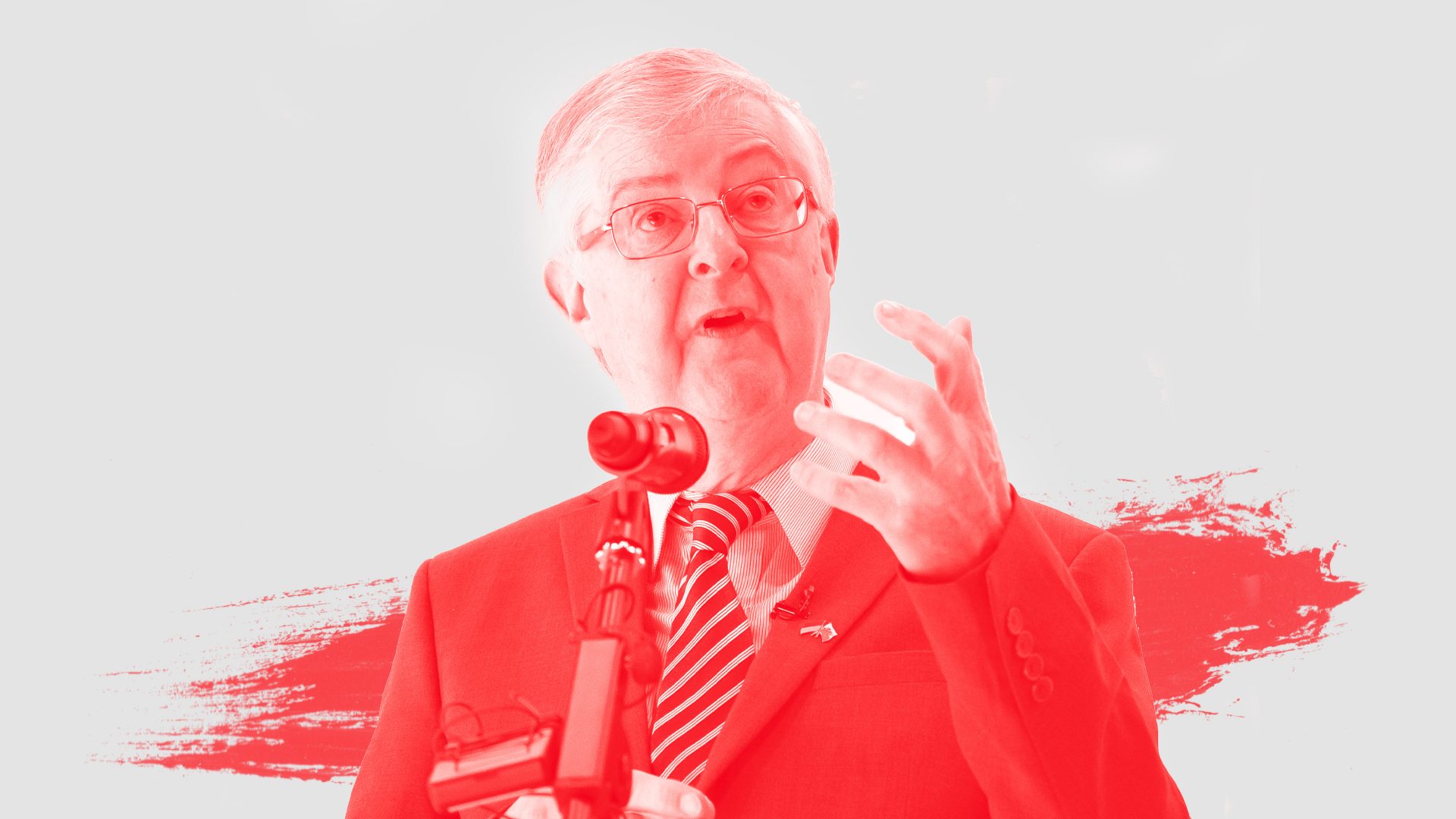The ghost-grey hull of a second world war shipwreck that resurfaced from Italy’s shrinking River Po this summer was less a relic of a forgotten past and more a reminder of a grim future facing Europe as global warming hits the continent’s water supplies.
The Po flows around 650km from the Alps in the north-west to the Po Delta in the east before ending up in the Adriatic. But after receiving barely any rainfall in four months, it began to dry up. Instead of nourishing the rich surrounding farmland that produces around 40% of Italy’s food, it became a barren scar on a desiccated land.
The government declared a state of emergency in five northern regions, while farmers warned they could lose 60% of the risotto rice harvest as paddies evaporated and turned salty. Fields of crops dried up, as did the grazing land for cows whose milk is used to make Parmigiano Reggiano cheese. Wheat yields were forecast to drop by between 20% and 40% and harvests of tomatoes and grapes were also expected to suffer.
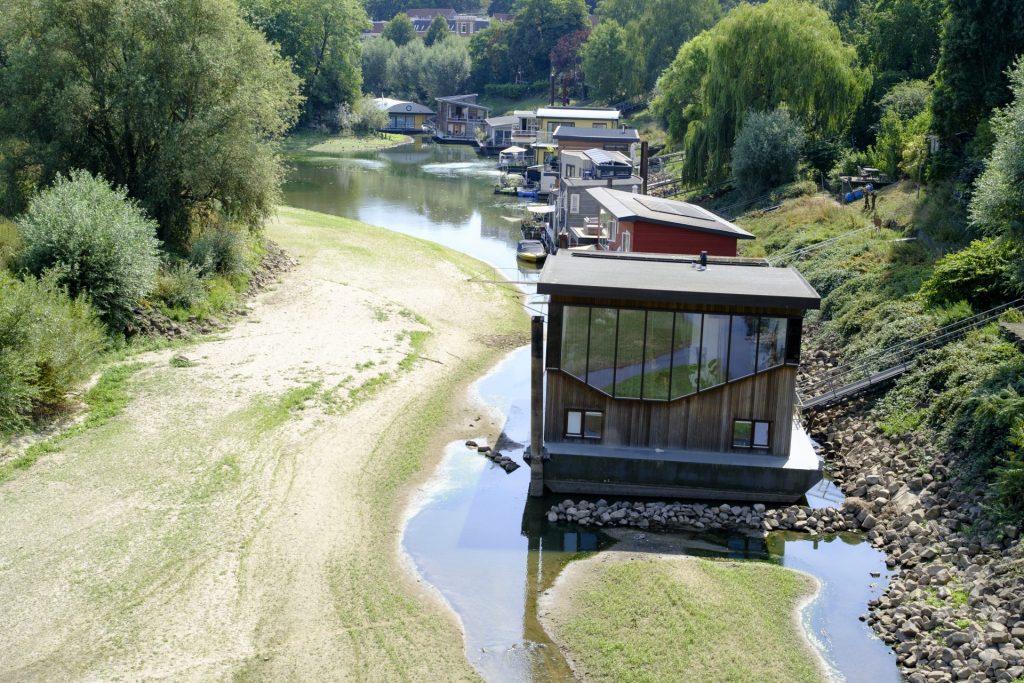
But this was not just an Italian catastrophe. In France, where cities like Nantes and more than 100 municipalities ran out of running drinking water, the agriculture minister said the corn harvest would be 18% lower than last year, while farmers warned of milk shortages because of a lack of cattle fodder. Even as rains returned in late September, envronment secretary Bérangère Couillard warned: “Water use restrictions are bound to last because the worst of the drought is yet to come, and we should expect to see it in October-November.”
Across Europe, decorative fountains were turned off as wildfires raged through tinder-dry forests. In Germany, water levels in the Rhine declined so sharply that it risked becoming unnavigable, threatening industries that transport goods along the waterway. In Spain, where July was the hottest month since at least 1961, reservoir levels fell to an all-time low of 40% and there were water restrictions from Andalucía to Galicia in the north. Drought was declared in England in August, with a warning that it could last until October.
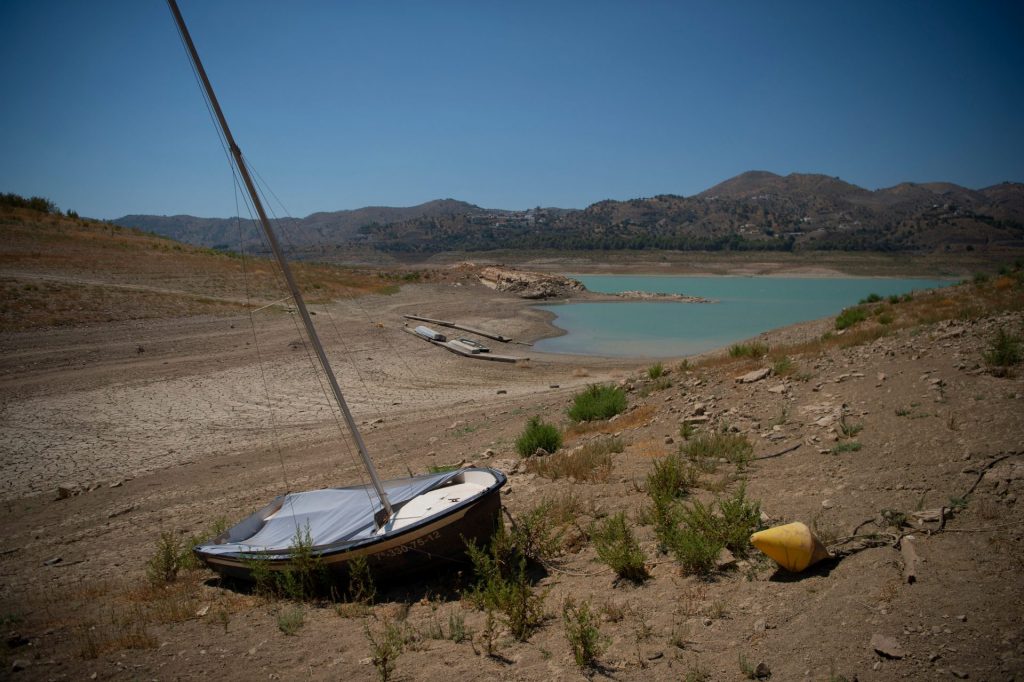
“This drought seems to be worse than the one in 2018 that was the worst on record since 1500,” said Andrea Toreti, senior researcher at the European Commission’s Joint Research Centre. “Compared to 2018, this year’s drought is more intense, persistent, and affects a much broader area.”
Toreti says that if global warming is not reined in by cutting heat-trapping greenhouse gas emissions immediately, these extreme droughts could happen almost every year by 2050. “How Europe will look in 2030 and 2050 depends on the actions we put in place today in terms of mitigation and adaptation,” Toreti said. “If we do nothing, the entire world is going to change dramatically.”
Climatologist Joel Guiot knows better than most what a worst-case Europe may look like. Director of research at the Cerege lab at the University of Aix-Marseille in France, he’s also one of the main authors of a seminal report by the UN’s Intergovernmental Panel on Climate Change (IPCC) on the consequences of 1.5C of global warming. He reckons we are on track for 2C of warming by 2050, and that could bring drastic change.

In 2016, he published a paper that said parts of southern Europe could turn into desert as global warming caused more disruption in the Mediterranean region than any droughts or heatwaves over the previous 10,000 years. His research found that if emissions were not cut, deserts would expand through southern Spain and Portugal, northern parts of Morocco, Algeria and Tunisia and other regions including Sicily, southern Turkey and parts of Syria.
Nothing has happened since then to change his prediction; if anything, this year’s drought has only proved that we are still on the road to radical transformation. Guiot notes, for example, that the drought actually started at the end of winter. In his home town of Marseille, they’ve had less than 100mm of rain since the beginning of the year.
In a new, as-yet unpublished study of the evolution of viticulture, or the cultivation of grapes, across Europe and north Africa, he found more clues as to what may be coming our way.
“It’s clear that with global warming of two degrees or more, it will be impossible to cultivate grapes in Spain except along the Atlantic coast, and in Portugal. And in north Africa, it will be impossible to cultivate any grapes unless you use irrigation and the problem is that the region is already lacking water,” he told the New European. Farmers in southern Spain won’t be able to grow fruit or vegetables, either.
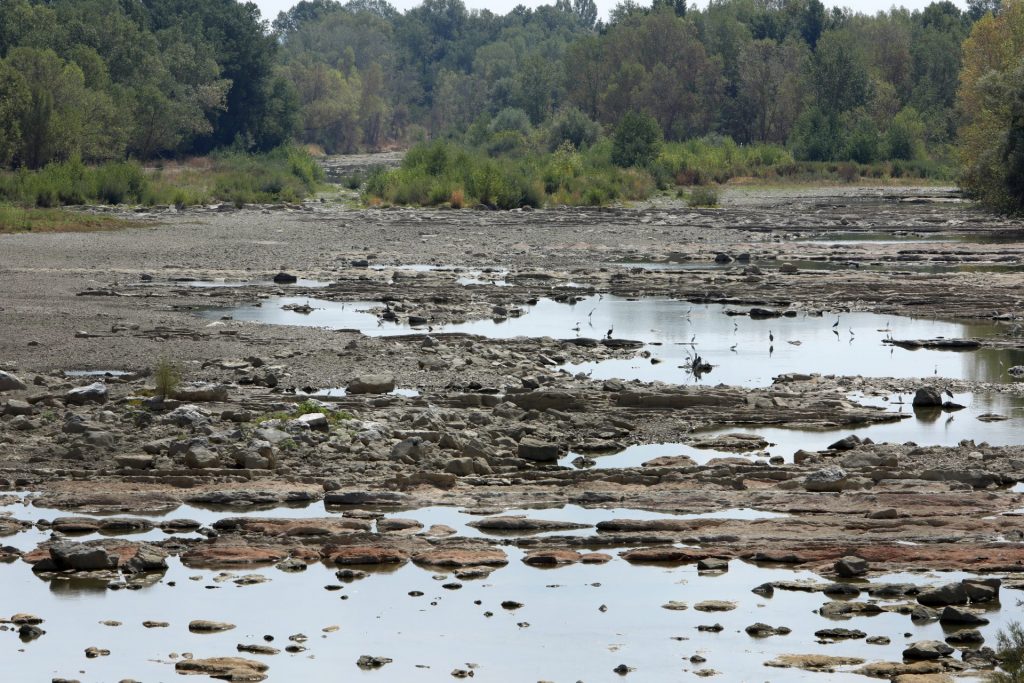
Schlueter
It’s not as if we don’t know what needs to be done – the world needs to cut emissions rapidly and that means decarbonising our societies by, for example, embracing renewable energy, switching to electric cars, eating less meat, and producing less waste. But politics complicates the picture, pitting fossil fuel-producing nations against vulnerable island states and other beleaguered communities, and turning a shared problem into an unseemly scramble to protect oneself.
Aside from the obvious effects of drought on plants and animals, widespread water scarcity will also affect energy production, industry, food production, biodiversity and possibly even population movements.
Water scarcity and higher temperatures could see people moving from Europe’s climatically hostile south to the north. The IPCC says that more than a third of the population in southern Europe will have less water than they need if temperatures go up by 2C. If they rise by 3C – an apocalyptic scenario that is still plausible by 2100 – then that risk doubles and will affect western and central Europe as well. Some parts of the Iberian peninsula could experience drought for more than seven months every year.
Colin Herron, senior water resources management specialist at the Global Water Partnership, says part of the problem lies in our collective failure to recognise the true value of water.
“There’s been a perception that water is infinite and we can use it as much as we want without any consequences. Imagine our water budget as a credit card… what we are seeing now is the bank telling us that we’ve been spending too much,” he said.
Away from fields of wilting crops, mountainous areas will also be hit economically when the snow disappears from lower slopes. Guiot says mountains warm faster than plains, making the impact on biodiversity more dramatic.
“The vegetation and the animals are climbing the mountains because it becomes more and more warm, but at some point it will be impossible to continue to climb. It’s like a cul-de-sac… governments need to modify the winter tourism economy in the mountains,” Guiot said.
In an assessment published last October, the European Environment Agency (EEA) noted that water stress in Europe was already affecting 30% of the population every year and this would get worse, with the strongest impact in southern and south-western Europe.
Experts say governments and water companies need to work on efficiency improvements, water storage, water reuse, early warning systems and land use change – and they need to recognise that recurring droughts – and other extreme weather episodes – are here to stay. The EEA assessment said authorities should move from crisis management to risk management.
Herron says the European Water Framework Directive, which aims to prevent and reduce pollution, promote sustainable water use, protect and improve the aquatic environment and mitigate the effects of floods and droughts, is a good tool for managing water resources. But many countries do not comply with the regulations, and a drier future will require further action.
Most countries have already committed to sustainable water management. Herron notes that all UN member states signed up in 2015 to the sustainable development goals (SDGs) – 17 targets that comprise a “shared blueprint for peace and prosperity”. The sixth of these goals calls for ensuring universal access to safe and affordable drinking water, sanitation and hygiene, and looks to improve water quality and water-use efficiency.
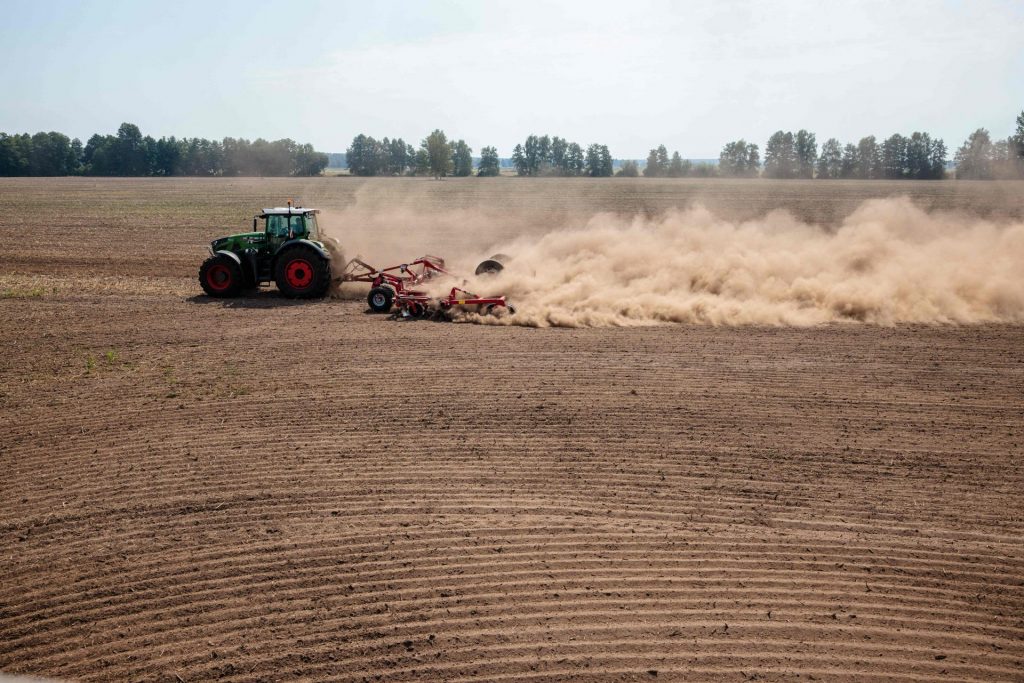
“The SDGs force us to look at leaving no one behind and even the existing policy in Europe is not that far-reaching so countries in Europe… need to pull their socks up. No country is exactly where it needs to be and we have eight years until the 2030 deadline (for the SDGs),” Herron said.
“Developed countries… need to make water a strategic issue of national security, both within the domestic context and also for international aid and in that respect, the US has been a world leader under the administration of Joe Biden, and has committed $111bn (£97.6bn) to improve water infrastructure,” Herron said.
In the UK, such forward thinking, or indeed any kind of joined-up thinking, seems in short supply when it comes both to water management and the broader question of climate change.
Water companies in England and Wales came under fire this summer when the industry regulator, Ofwat, revealed that they lost more than 1tn litres through leaky pipes last year. The inevitable outcry was bolstered by fury over the large salaries paid to directors and shareholders, and widespread anger over the pumping of raw sewage into the sea.
During the seemingly endless summer campaign to choose a new leader for the Conservative Party, candidates Liz Truss and former chancellor Rishi Sunak said very little about the climate emergency or the dwindling water supplies, even as they criss-crossed the country at the peak of a heatwave. Truss, who won and has taken over as prime minister, says she is committed to achieving net zero by 2050 but she also wants to limit solar and onshore wind power, and supports fracking and increased fossil fuel production.
All this does not bode well for future risk planning. It seems we are being primed to view calamitous weather events as a regular part of summer, something we just have to deal with. Efforts to mitigate the effects of global warming are often dismissed by leading Tories as “green crap” we simply cannot afford.
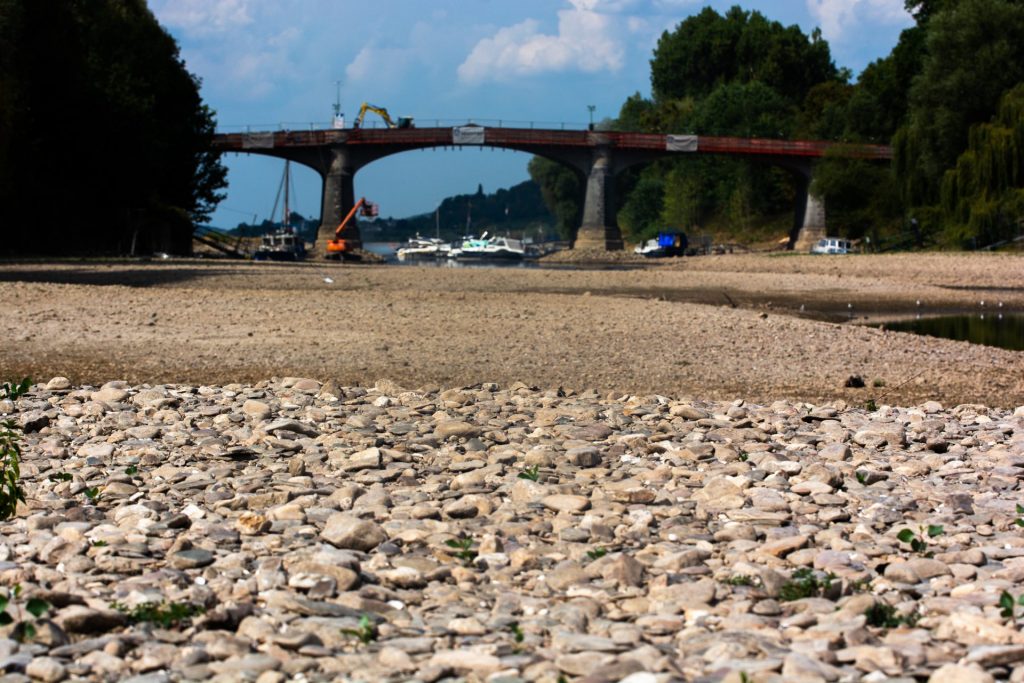
But perhaps politicians, with their short-term priorities, are not the answer. Piers Forster, professor of climate physics at the University of Leeds and director of the Priestley International Centre for Climate, says global financial institutions are now recognising the reality – and consequences – of the climate emergency and resulting droughts. They understand that action is needed to, for example, secure global supply chains, and this could drive institutional change.
“The world can go in either of two directions. It can either go towards conflict as we compete for resources… and our economies get harmed, or it can go the other way and get us to cooperate across international borders to try to firm up the international institutions to try to make us more resilient,” he said.
GWP’s Herron also believes business can lead the way and cites, as an example, the creation this month by sustainability investor group Ceres of the Valuing Water Finance Initiative, which brings together investors and pension funds to push top corporate water users to address financial risks and protect resources.
“There is an increasing recognition from the private sector that water is a very material risk for their business operations… the short-termism that comes with the political structure we have is unfortunately counterproductive to the long-term nature of water issues,” he said.
The public also have a role to play. Herron recalls the 2018 water crisis in Cape Town, South Africa, when the city came close to being the first major city to run dry. Everyone got involved in preserving what little water there was – taking short showers, not flushing toilets, using recycled water – and it worked. But the crisis was soon forgotten and now water reserves are again dwindling across the world, from South Africa to Chile.
“The alarm that was raised when Cape Town got so close to Day Zero has not permeated through society. We’re not learning the lessons; we’re not thinking collectively about what being without water would imply,” says Herron. “We need a much more mobilised civil society and a much more informed one.”
Over to us, then.


